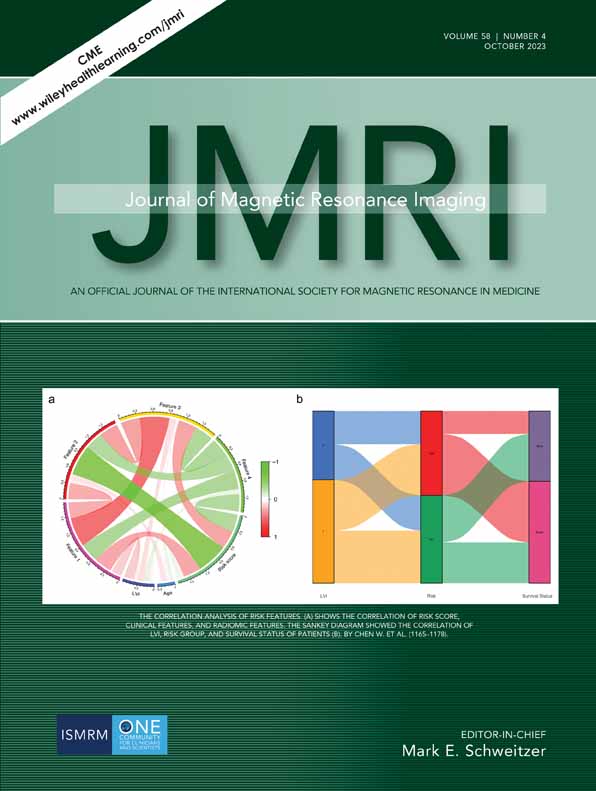Breast Cancer Growth on Serial MRI: Volume Doubling Time Based on 3-Dimensional Tumor Volume Assessment
Abstract
Background
The volume doubling time (VDT) of breast cancer was most frequently calculated using the two-dimensional (2D) diameter, which is not reliable for irregular tumors. It was rarely investigated using three-dimensional (3D) imaging with tumor volume on serial magnetic resonance imaging (MRI).
Purpose
To investigate the VDT of breast cancer using 3D tumor volume assessment on serial breast MRIs.
Study Type
Retrospective.
Subjects
Sixty women (age at diagnosis: 57 ± 10 years) with breast cancer, assessed by two or more breast MRI examinations. The median interval time was 791 days (range: 70–3654 days).
Field Strength/Sequence
3-T, fast spin-echo T2-weighted imaging (T2WI), single-shot echo-planar diffusion-weighted imaging (DWI), and gradient echo dynamic contrast-enhanced imaging.
Assessment
Three radiologists independently reviewed the morphological, DWI, and T2WI features of lesions. The whole tumor was segmented to measure the volume on contrast-enhanced images. The exponential growth model was fitted in the 11 patients with at least three MRI examinations. The VDT of breast cancer was calculated using the modified Schwartz equation.
Statistical Tests
Mann–Whitney U test, Kruskal–Wallis test, Chi-squared test, intraclass correlation coefficients, and Fleiss kappa coefficients. A P-value <0.05 was considered statistically significant. The exponential growth model was evaluated using the adjusted R2 and root mean square error (RMSE).
Results
The median tumor diameter was 9.7 mm and 15.2 mm on the initial and final MRI, respectively. The median adjusted R2 and RMSE of the 11 exponential models were 0.97 and 15.8, respectively. The median VDT was 540 days (range: 68–2424 days). For invasive ductal carcinoma (N = 33), the median VDT of the non-luminal type was shorter than that of the luminal type (178 days vs. 478 days). On initial MRI, breast cancer manifesting as a focus or mass lesion showed a shorter VDT than that of a non-mass enhancement (NME) lesion (median VDT: 426 days vs. 665 days).
Data Conclusion
A shorter VDT was observed in breast cancer manifesting as focus or mass as compared to an NME lesion.
Level of Evidence
3
Technical Efficacy
Stage 2
Conflict of Interest
One author of this research, Shao-Feng Duan works for a medical company (GE Healthcare, Precision Health Institution, China). This study did not receive funding from GE Healthcare company. No disclosures of potential conflicts of GE Healthcare company are reported. No other potential conflicts of interest relevant to this article are reported.




